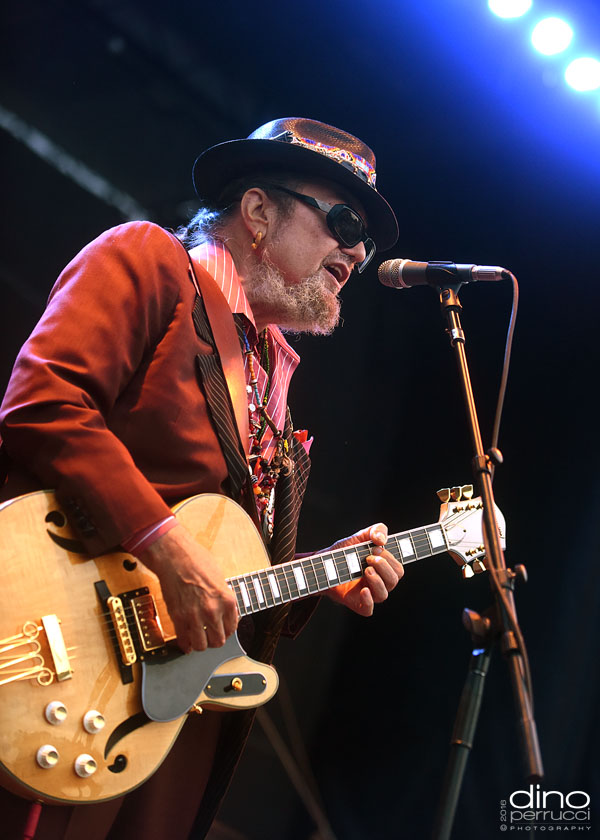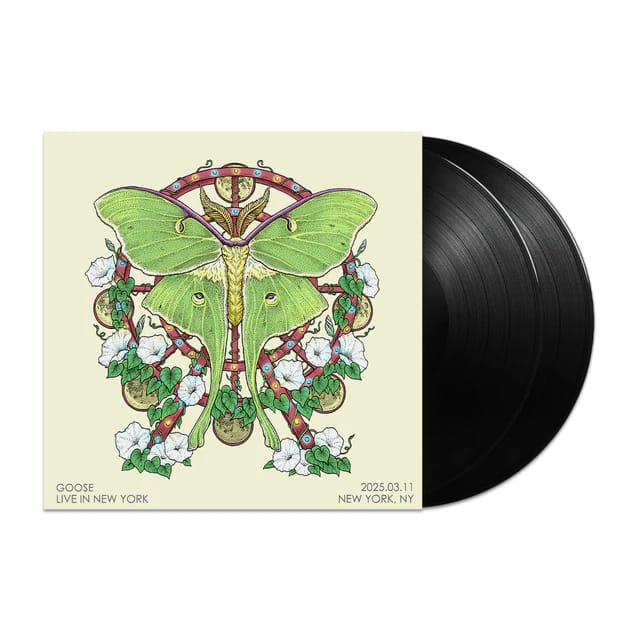Dr. John: The Night Tripper Returns (Relix Revisited)

Following the passing of New Orleans legend Dr. John Thursday morning, we revisit our interview with the iconic Night Tripper that originally ran in Relix‘s daily newspaper at Bonnaroo Music & Arts Festival, the Bonnaroo Beacon, in 2006.
Malcolm John “Mac” Rebennack, better known as Dr. John, has seen a hell of a lot in his 50 years in the music business. He started his studio career at 14 when his teacher couldn’t go to a session. He cut his first record in 1956. His life and his career have gone up and down. He speaks a patois all his own. In the late 1950’s, he was shot, but switched to piano and recovered. Last year, after Hurricane Katrina killed his nephew and drowned many parts of his city, Dr. John, a native of the Third Ward, found himself forced into the role of musical ambassador for the city that had suffered the worst natural disaster in the history of the country. Singing the National Anthem at the Super Bowl and closing multiple benefit concerts, Dr. John reminded audiences of everything they loved about the city: the music, the atmosphere, and the sheer confluence of influences that made New Orleans one of the most vibrant and unique cities on the planet.
With his 1968 album Gris-Gris, a new persona was invented, named “Dr. John, the Night Tripper” after an old voodoo shaman. Wild dancing, onstage chaos, voodoo face paint, outlandish costume, and swampy music came to characterize this period, and Dr. John has not played under this name for over 30 years. Dr. John represents the spirit of Bonnaroo, in part for having indirectly named the festival with his 1974 album Desitively Bonnaroo (Bonnaroo is Cajun for “a real good time). Thus it is fitting that his resurrection of the Night Tripper occurred on the festival grounds in the wee hours of Saturday night/Sunday morning. The following interview (excerpted in the Bonnaroo Beacon) took place a few days before the fest.
Who is the Night Tripper, and how is he different from Dr. John? Why is he coming back to life now after being dormant for over 30 years?
Ain’t no difference. It’s all one sucka in there however you want to break it down, I keep everything very simple. We been asked over a lot of years basically we haven’t had all our stuff brung up from old shows back from a long time ago. It was too much a hassle to put it all back together, so I just kind of shelved it for a long time.
I find it’s a kick to be playing for the Bonnaroo Festival, and I feel it’s connected behind the Desitively Bonnaroo thing, and I think this is somehow left-fieldly connected to the the old kind of set that we haven’t done in a while, and I think the band’ll get a kick out of it, and we’ll just bring something different just for that set, and that’ll be something people talk about, you caught it there, and that’s that. I’m gonna have Rev. Gold with me, we’ve got the dancers, the whole maneuver.
Your new album, Mercernary, was inspired by the songs of Johnny Mercer, and you said you found you had a lot in common with him from reading his autobiography. What do y’all share?
I had to hustle out of left-field to stay in this business, cause I was never musically trained or I wasn’t a lot of things. I just was around good guys at school, right. So, he had it because he always had a desire to be like one of them studs getting songs on Broadway. Well, I got songs in movies out of left field just because of the way it is today. I never even thought about it, but there was a thing about how it worked out. He landed out of left-field, and I landed where I landed out of left-field. And my life has landed me out of left field, into the bleachers, the parking lot wherever I landed, and it was never in my original plan.
When I became Dr. John the Night Tripper I had the idea for the record but I was gonna have somebody else do it. The guy wanted to but his manager didn’t like the idea, and I just hit the wall. I got aggravated, and my conga player, Didymus, said “Look, you know if Bob Dylan, and if Sonny & Cher can sing, then you can sing, right. You just do it. To hell with all of that.” So that was his attitude, and I figured, well, I had to respect my elders.
Do you remember the first record you cut?
The first record I made as an artist, I cut it in 1956. It was called “Storm Warning”. My first session, I’m not sure, I just know it was subbing for “Papoose” Nelson. I’m not sure whose session it was, but it was back when I was playing the guitar before I got shot in my finger, and that’s what I can remember.
How did you get shot?
A guy was trying to pistol-whip the singer with the band, and the guy’s mama said she wouldn’t like it if something happened to her son. So I was thinking about that, and went to get the gun. I thought my hand was over the handle but it was over the barrel, and that’s life.
Was the piano something that you learned afterwards, or did you know how to play it beforehand?
My auntie taught me how to play the piano as a little kid. She showed me how to play some boogie-woogie stuff and all. But I knew I’d never get a job in New Orleans playin’ no piano with all them bad piano players around. Everybody, every neighborhood had bad piano players. I wanted to play music, so I figured that’s how I’m gonna get me a job learn the guitar.

Now I’d like to take a moment for what I’d like to call Dr. John’s Dictionary. I was hoping you would define some of the terms that show up in your work.
No problem.
Gris-gris:
It’s an African term, it might be what you would call voodoo, but it really represents that there is no black or white in anything that everything is shades of grey, and that’s kind of a way to work. It comes from Africa, but it’s a French word.
Sippiana:
It’s the coast right between Mississippi and Louisiana where the Hurricane hit. My father and a lot of the old-timers used to call that Sippiana and we used to fish a lot, on the boat we’d go from Louisiana, and be in Mississippi and some other areas still fishing from one to the other, and all along that Sippiana Coast was good fishing without going into the Gulf of Mexico or anything else. You could stay in the brackish waters inland which are disappearing, which is another thing that’s affecting the good food down here because of all this stupidity.
Mama Roux:
This was a story that I wrote about a gris-gris queen down there. I didn’t know that one of the women was also one of the queens of the Indians, the little red-white-and-blues. When I was a kid there was one of the famous Indian Tribes, the Mardi Gras Indians, and she was double well-known.
Mos’ Scoscious:
Scoscious is kind of like a combination of scrumptious and delicious. Typical Ninth Ward word.
Jockamo feeno ah nah nay, jockamo feena nay:
Well, you’ll have to ask one of the Mardi Gras Indians. There might be one or two at the gig. Just ask them.
Back to matters of a bit more gravity, Katrina devastated New Orleans in a way I can’t really put into words. How has it affected you? How has it affected your shows?
We made a record called Sippiana Hericane right after that. I say something about it at my shows, and it’s not nothing nice I’m saying about a lot of people. I’m a coonass from Louisiana, and we some grudge-holding suckas and we are not people to mince our words about nothing.
To make a long story short: we are aggravated and disgusted that they want to put a third-world country levee back up that was never sufficient to maintain a problem that’s been going on for fifty years. They want to rebuild the levee, and it might help if they guaranteed it would hold up, and on and on, but there’s people scattered and splattered all over the United States, and there’s people scared to go home that could possibly go home cause it’s so shaky what they did, et cetera, et cetera, et cetera. I’m not too thrilled with none of it.
I just go out and tell the truth the best I know it, and I get a lot of flak from a lot of people. I hear about stuff from the e-mails and all that, but I’ve got the attitude that that’s just how it is.
I think that I’m going to remember forever the look on your face when you closed Shelter from the Storm and sang “Walking to New Orleans.” I think the horror there said more about the devastation than anything and I think it got the point across to everyone who watched the benefit.
That’s Bobby Charles’ song that he wrote for Fats Domino. The whole town where he was in South Louisiana is gone, in what they used to call the Cajun Riviera. It ain’t no more.
We were driving back from a gig in Galveston, and when we drove and crossed the Texas border highways was fine in Texas. Soon as we hit Louisiana, it was a disaster area. It looked like a volcano had just wiped out Houma, Lake Charles, and all that area just flattened. As you went further east towards New Orleans, it looks like they dropped atom and hydrogen bombs all over St. Bernard. As you’re proceeding east, it just looks like different kinds of the highways are so bad, everything you’re dealing with is so bad. It’s very, very hard for people to understand the depth of the destruction.




















